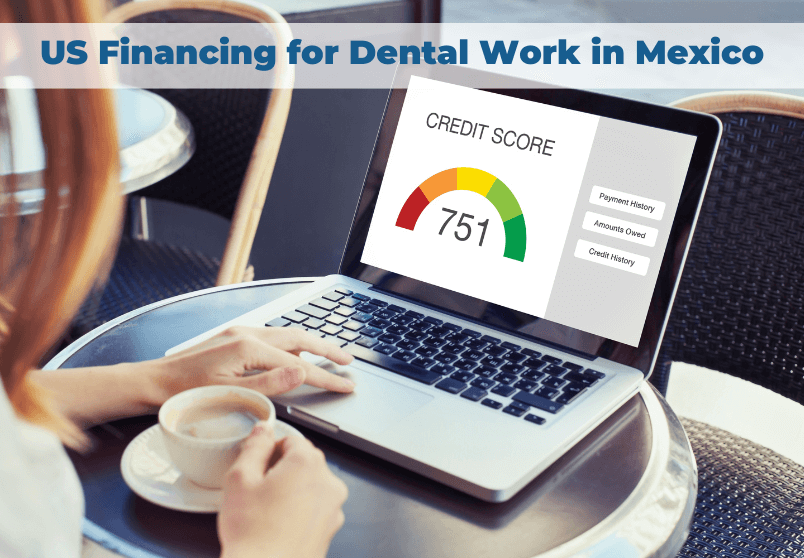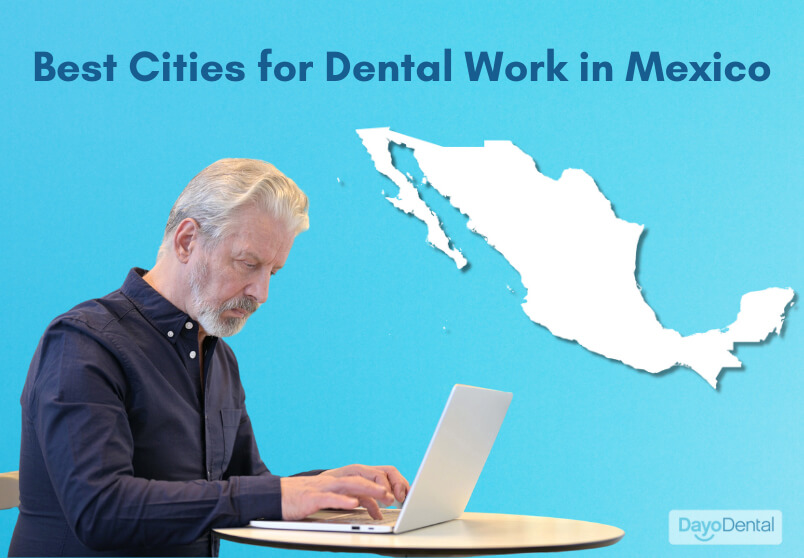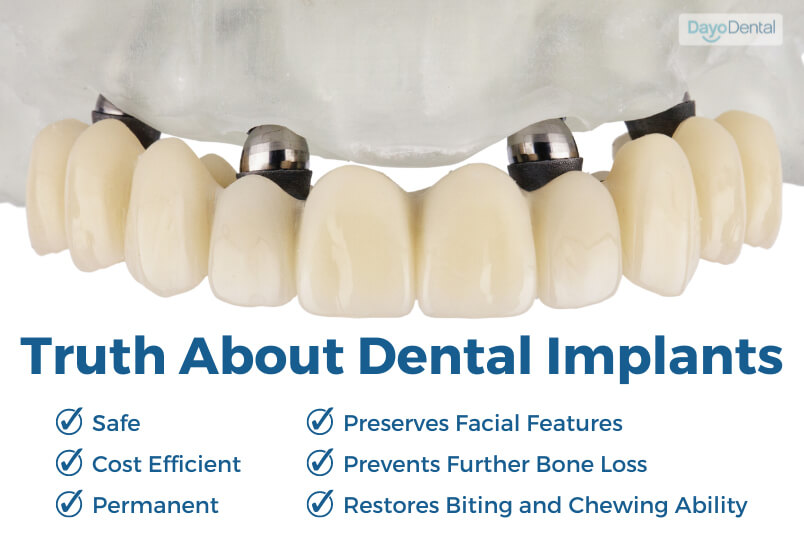67 Q&As Crucial To Periodontal Disease or Periodontitis
Are you unhappy with the appearance of your smile? If you have more than one dental problem, you may be a good candidate for full mouth reconstruction. Read on for more information on this life-changing procedure.
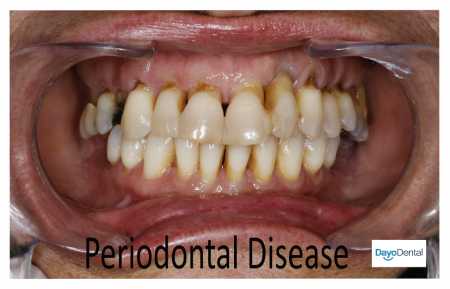
Periodontal Disease, also called Periodontitis, is common. But most people don’t know that they have it. The problem is getting answers to your questions.
Have you ever experienced this?…
You have a dental problem. You go to your initial dental consultation with a list of questions. The dentist does the exam, delivers your diagnosis, and asks if you have any questions. You ask the first question from your list, the dentist answers. You ask your second question. This time, the dentist taps you in your arm after he answers, and tells you, “I have to go, but they will give your paperwork at the front desk. It was nice to meet you.” What about my 10 other questions?
For a procedure as complex as periodontal disease, where do you get the true answers that will save your teeth? We know your pain. That’s why we actually pinned down a US periodontist in the chair to get answers to these common questions. We are going to simplify it for you. So, here it goes…
Section 1: What is Periodontal Disease?
1. What is Periodontal Disease?
GUM DISEASE – Have you been told that you have gum disease? Periodontal disease is also called gum disease, but this is not really an accurate description of the disease. It really should be called bone disease.
Periodontal disease is actually a permanent loss of the bone that attaches the teeth into the body through a specialized ligament. Bone disease and bone loss is the true definition of Periodontal Disease, which is also called Periodontitis.
True gum disease is actually called GINGIVITIS, which we will discuss later.
2. Who is at risk of Gingivitis, Periodontal Disease, or Periodontitis?
Anyone can get these gum problems. But here are the people who are most at risk:
- History of periodontal disease in the family
- People with poor dental hygiene
- Medically compromised patients
- Patients with changes in hormone levels
- Diabetic patients
- Smokers / Tobacco users
- Patients taking certain medications that increase the risk
3. Can you cure Periodontal Disease?
Periodontal disease or bone disease is not reversible. Gingivitis, or gum disease is reversible. You can only contain Periodontal Disease, but you can’t completely be cured from it.
Once you have Periodontal Disease, you have to go to your regular dental cleaning visits. Often, you’ll be on a very tight schedule, usually every three (3) to four (4) months.
4. What are the stages of Periodontal Disease, or Periodontitis?

Here are the 5 stages of the disease:
Stage 0 – Good Health / No Disease
Some don’t consider health a diagnosis, but it is. It is a baseline. You must have something which to compare yourself to if you want to be healthy. It is a lack of disease! In a state of periodontal health, you have pink, healthy gums, no bleeding, no plaque, no tartar, no bone loss, and no pain on chewing.
Stage 1: Gingivitis (Reversible)
This is the first stage, and the only stage, of Periodontal Disease that is reversible. Gingivitis is the state of red, swollen gums. Upon brushing, you can have pain and tenderness. You can have bleeding, sometimes profuse. This is caused by the byproducts from plaque and tartar. Gingivitis can be reversed as fast as two (2) weeks after getting treatment.
Stage 2: Mild Periodontal Disease, or Periodontitis (Irreversible)
This is the second stage of Periodontal Disease. But this is the first stage of Periodontal Disease which has irreversible effects. In Mild Periodontal Disease, you will still have the signs and symptoms of gingivitis present, in addition to up to thirty percent (30%) bone loss.
Stage 3: Moderate Periodontal Disease, or Periodontitis (Irreversible)
You will still have the signs and symptoms of gingivitis present, in addition to up to fifty percent (50%) bone loss.
Stage 4: Severe Periodontal Disease, or Periodontitis (Irreversible)
In Severe Periodontal Disease, you will still have the signs and symptoms of gingivitis present, in addition to up to ninety percent (90%) bone loss. In addition, you may also have pain present upon chewing. This is due to the mobility of the teeth from bone loss. As the teeth are moving, they are tearing the specialized ligament that is holding the tooth into the jaw bone, called the Periodontal Ligament, or PDL.
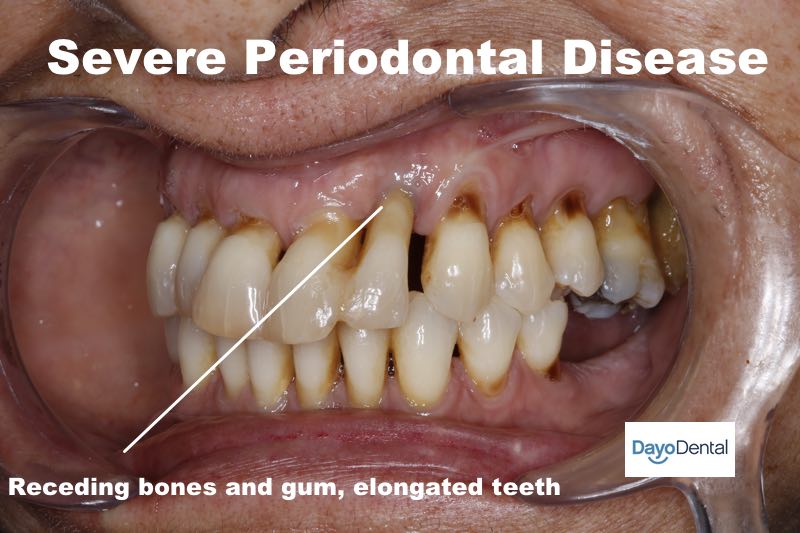
Stage 5: Tooth Loss (Irreversible)
The fifth, and final stage of Periodontal Disease is tooth loss. After this, there is no going back. The tooth cannot even be replaced with dental implants due to lack of bone at most times.
5. What is gingivitis?
Gingivitis is literally swelling and inflammation – this swelling and inflammation is due to bacteria and plaque that is present around the gum line. Under most circumstances, this is not painful but can make the gums very fragile and bleed very easily. This is the first stage of Periodontitis as noted above.
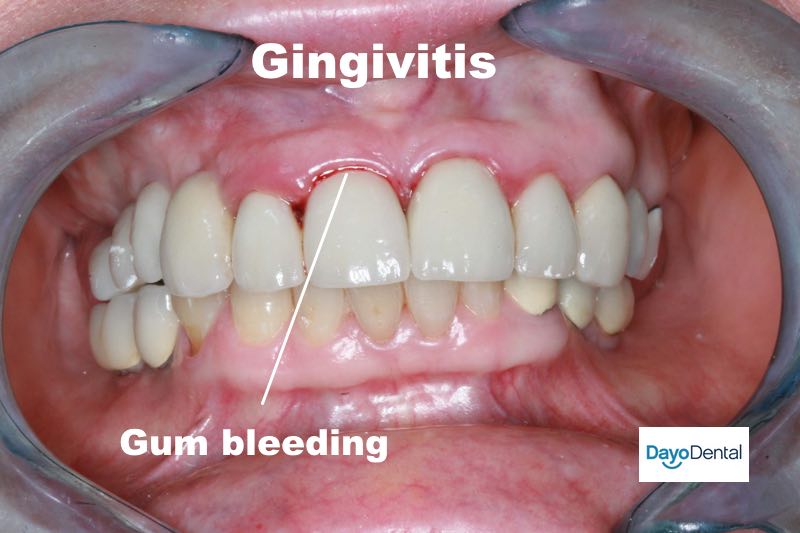
6. I have heard of generalized versus localized Periodontal Disease, what are these?
To answer this question appropriately we must first define that there are two types of Periodontal Disease. Your dentist will go into further detail with you in person if needed.
Type 1: Aggressive Periodontal Disease
Aggressive Periodontal Diseases have a change in the bacteria due to changes in your body.
These changes could be due to hormones, disease processes, medications, aging, or a multitude of factors. By a change in bacteria, we mean that you have more bacteria than traditional Periodontal Diseases. They are still the same bacteria that are in the mouth, but different species are in greater value.
- Localized Aggressive Periodontal Disease
Localized Aggressive Periodontitis is usually confined to just the incisors (front teeth) and the first molars. This type typically occurs in patients less than thirty (30) years and under. - Generalized Aggressive Periodontal Disease
This is much like Localized Aggressive Periodontitis, only it is not just confined to the incisors and the first molars. It is often a sign of significant immunodeficiency, or systemic disease.
Type 2 – Chronic Periodontal Disease, or Periodontitis
Chronic Periodontitis are the traditional workhorse type of periodontal disease. They really aren’t too spectacular, they just do their work, or destruction, as the case may be. They are sometimes called Pyorrhea or Riggs’ disease.
- Localized Chronic Periodontal Disease
The disease will most likely be in one area of the mouth where a patient has a predisposing factor such as a failing root canal. In this instance, it would probably be best to have the root canal tooth replaced with a dental implant to treat the Periodontal Disease. - Generalized Chronic Periodontal Disease, or Periodontitis
This is the traditional Periodontal Disease type that takes away people’s teeth. This affects two or more quadrants of the teeth, and the destruction can never be reversed.
7. Can you have perio disease symptoms in sections of the mouth, or is it always the entire mouth?
Gum disease can be either localized or generalized – for more information see section above.
If left with no treatment, meaning no change in oral health habits, and no treatment from a dentist, dental hygienist, or Periodontist, the disease process, will at least remain the same, if not get worse.
This depends on a multitude of factors. Some patients can have a mouth full of plaque and tartar, yet no bone loss will be present. Others may have very little plaque and tartar, but bone loss can begin almost immediately. This is patient dependent.
8. Is Periodontal Disease painful?
Under most circumstances Periodontal Disease is not painful – It is not until end-stage Periodontitis that this disease becomes painful.
When it is painful – There is one case when Periodontal Disease is for sure painful. That is the periodontal abscess. This is when a piece of tartar causes an abscess in the supporting structure of the tooth. This can be very painful and needs to be treated by a Periodontist, or a General Dentist with advanced training.
Periodontal Abscess can happen in Moderate to Severe Periodontal Disease. This is due to the fact that an abscess can also be caused by faulty root canals, fillings, and crowns.
Section 2: Signs and Symptoms
9. How do I know if I have Periodontitis?
We’ve prepared a simple chart to help you identify your Periodontitis stage:
| Signs and Symptoms of Periodontal Disease by Stage | |
| Stage 0: No Disease | – healthy pink gums – gums don’t bleed when you floss |
| Stage 1: Gingivitis | – red, swollen gums – bleeding when you brush or floss |
| Stage 2: Mild Periodontal Disease | – bad breath – receding gums |
| Stage 3: Moderate Periodontal Disease | – teeth are becoming mobile – heavy tartar “bridges” between the teeth |
| Stage 4: Severe Periodontal Disease | – spaces between teeth – pain upon chewing |
| Stage 5: Tooth Loss | – teeth are falling out on their own |
10. I always have an area in my mouth that bleeds every time I floss. Are these early signs of Periodontitis?
This is definitely a sign of gingivitis. It could also be a sign of Periodontitis. Likewise, it could be a sign of a faulty or failing crown, filling, or root canal.
11. How do I know if my bad breath is due to Periodontal Disease?
In general, if your bad breath doesn’t go away upon brushing twice per day on multiple days, there is an underlying problem going on. The first place that you should go is to the dentist to be evaluated.
The most likely reason for one to have bad breath is Periodontitis.
However, there are other systemic diseases that can cause bad breath. If bad breath from Periodontal Disease is ruled out, your dentist, or Periodontist, will refer you to the appropriate doctor for the appropriate work-up.
12. How does Periodontitis cause jawbone loss?
We know that bacteria from Periodontitis cause bone loss, but how?
In gum diseases, excessive bacteria populate the oral cavity. The bacteria excrete their byproducts into the oral cavity, specifically around the tooth, and the ligament around the tooth.
These byproducts do two specific things: cause inflammation by stimulating a cell called a neutrophil or cause bone loss by stimulating a cell called an osteoclast. Neutrophils are responsible mainly for gingivitis and overall inflammation. Osteoclasts are responsible mainly for bone loss. These are the bone eating cells of the body. Normally, they eat old, bad bone cells. But, when over-stimulated, they eat away too much bone.
Okay enough of the hard science, let’s get back to important things you want to know.
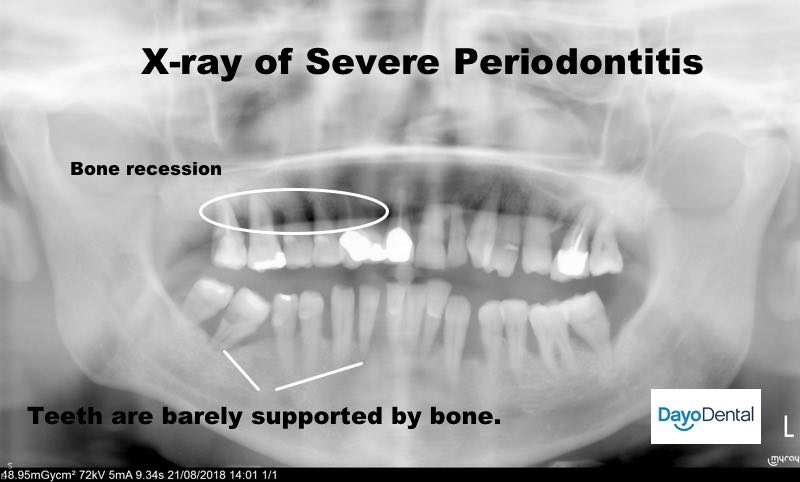
13. What are periodontal pockets?
Dentist always talk about pockets, What does it mean? What do the numbers mean?
As Periodontal Disease progresses, it doesn’t do it in an even fashion. The bone loss will first widen against the tooth at the top, as it starts to deepen. As the bone loss deepens, it will cause a soft tissue “attachment deficiency” against the tooth. This is the “periodontal pocket”.
That means your gums start to separate from the teeth. Pockets measure the degree of separation of the gums from the teeth, measured in millimeters. Your Periodontist creates a perio chart that contains the pocket measurement of each tooth during your consultation.
Section 3: Causes of Periodontal Disease
14. Is Periodontal Disease Contagious?
No, Periodontal Disease (Bone Disease), or Periodontitis is not contagious. You cannot catch this from kissing your partner, children, your dog, cat, or anything else for that matter.
Likewise, Gingivitis or any other gum disease are also not contagious.
15. Then where does the bacteria in Periodontitis come from?
All bacteria in the mouth are there naturally. In Periodontitis, there are certain bacteria that start to grow in abnormal proportion. When these bacteria get “out of control”, they can start to cause inflammation and bone loss. Like many things in life, the mouth must also live in harmony.
16. Who can get Periodontal Disease?
Anyone can get it. It has no prejudices; however, it may have some predilections, which we will get into in just a little later on.

17. Is Periodontitis hereditary?
What most people don’t know, but all Periodontists are well aware, is that Periodontal Disease is fifty percent (50%) genetic. That’s right! Thanks mom and dad!
18. Does drinking soda cause Periodontal Disease?
 Fortunately, no. Drinking soda does not cause Periodontal Disease. It can make you lose your teeth, but that is a different discussion on dentistry.
Fortunately, no. Drinking soda does not cause Periodontal Disease. It can make you lose your teeth, but that is a different discussion on dentistry.
19. Does eating sweets cause Periodontal Disease?
Just like drinking soda, eating sweets does not cause Periodontal Disease.
Ironically, eating sweets can cure it, as it will rot your teeth out. You can’t have a perio disease on teeth you don’t have.
20. Does smoking cause Periodontal Disease?
There has been a long debate on whether or not smoking causes Periodontal Disease, or if it has an additive effect. Regardless, it does seem to be a player in the ballgame,
especially if you have other predisposing factors.
Do e-cigarettes cause this gum problem? The use of e-cigarettes has been a relatively new phenomenon. There has been very little research on the effects of e-cigarettes on overall health, in general, let alone periodontal health. This is due to a lack of longevity of data, not the lack of trying. With time, the evidence should be there for us to know.
21. Does chewing tobacco cause Periodontitis?
This is much like smoking. This is another debate whether chewing tobacco or using smokeless tobacco causes Periodontitis or if it is contributory to the disease. Regardless, if you are predisposed to the disease, you should stay away from chewing tobacco or smokeless tobacco.
Chewing tobacco does can lead to oral cancer, but that’s another discussion.
22. Does not flossing cause Periodontitis?
Not flossing is probably the biggest risk factor one has to having Periodontal Disease. Ideally, one should floss at least once a day.
23. Can faulty root canals, crowns, or fillings lead to Periodontitis?
Faulty dental restorations and bad root canals can lead to Periodontitis, but only in a localized form.
Faulty crowns, fillings, and root canals cause localized inflammation, much like bacteria do. This causes neutrophil and osteoclast stimulation the same as bacteria do in Periodontitis. This neutrophil and osteoclast activity is localized. Since it is not bacterial in nature, and all natural tooth structure is still intact, the gum disease can still be reversed / restored.
The periodontal disease symptoms will usually resolve on its own when you fix a faulty crown, filling, or root canal treatment, combined with a localized periodontal therapy.
24. Do bad habits, like poor oral hygiene cause Periodontal Disease?

Just like not flossing, poor oral hygiene, in general, will cause Periodontal Disease. Flossing is just one part of oral hygiene. Here are 3 key personal hygiene habits you must have:
- Brush – at least twice a day
- Interdental Aid – use floss, waterpik at least once a day
- Mouth rinse – such as alcohol-free mouthwash, at least once a day.
25. Do hormonal changes cause Periodontitis?
Hormonal changes can cause Periodontitis. The one that is the most pronounced is puberty. Next to this is pregnancy, which we all know is a marked change in hormones. You may want to see a Periodontist, or your General Dentist in both cases if you are seeing changes in your teeth and gums.
26. What medications contribute to Periodontal Disease?
There are a number of medications that can contribute to Periodontal Disease. Without giving a list,
that would be exhausting, and honestly never ending, because there are new medications coming out every day, we will just give a list of the top medication categories.
The top medication categories that contribute to Periodontal Disease include:
- antihistamines
- high blood pressure medications
- antidepressants
- pain medications
Section 4: Effects of Periodontitis
27. What are the effects of Gingivitis?
Essentially, the effects of Gingivitis are only bleeding gums and some bad breath. Gingivitis, as stated earlier, is reversible.
Gingivitis may progress to Periodontal Disease if not treated.
28. What are the effects of Periodontal Disease?
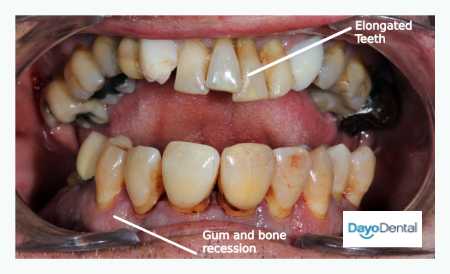
Eventually, you will lose your teeth if it is not treated. If the bone loss is too great, you will not be able to get dental implants. It can cause your gums to recede, thus causing a very “toothy” smile, or being “long in the tooth”.
29. Does Periodontitis hurt?
Periodontitis is not painful in most cases. This can be very dangerous, as you don’t even know you have a disease process going on until much damage is done.
Eventually, Periodontitis can become painful. In the event of periodontal abscess, you bet it can be very painful.
30. Does Periodontitis cause bad breath?
Periodontitis does cause bad breath. This is due to the bacteria that cause the disease. The worse the Periodontitis, the more bacteria will be present. The more bacteria, the worse the smell will be.
31. Does Periodontal Disease cause your teeth to be mobile / loose?
As Periodontal Disease causes bone to be lost, it causes the foundation of the tooth to be lost. As that foundation is lost, the tooth loses stability in the jaw bone. With less stability in the jaw bone, it will become more mobile over time.
32. Can I lose all my teeth over time?
Eventually, this is the last stage of Periodontal Disease if left untreated. Your only option is multiple extractions and dentures (or dental implants if you have enough bone left). Infections in the mouth can lead to abscesses, which can lead to more costly treatments.
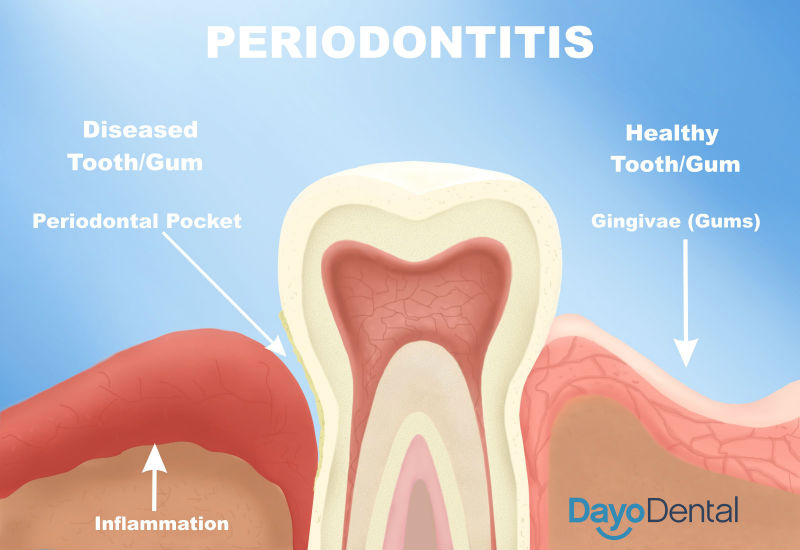
33. Is Periodontitis correlated to multiple systemic diseases?
First, let’s define a scientific correlation… A correlation is a mutual relationship between two things.
Periodontal Disease can be correlated to multiple systemic diseases including endocrine disease, diabetes, and heart disease. This is why if you have any of these diseases or any other systemic disease, your oral health should be of utmost importance to you.
Also, you must work with your physician to keep your systemic disease well controlled if you have this disease.
34. Is Periodontitis associated with cardiovascular disease?
Those that are at risk for cardiovascular disease are also particularly at risk for Periodontal Disease. We used to classify risk as certain ages, socioeconomic groups, and things like that. We cannot do so as much. We are now doing it on a more case to case basis. As your particular cardiovascular risk goes up, so does your Periodontal risk, and vice versa.
35. How long do I have to leave my Periodontal Disease untreated before I lose my teeth?
That is an unknown answer, as everyone’s disease process progresses differently than someone else’s. Yours could be the type that progresses fast. It’s best to see a Periodontist to diagnose and treat your type.
But one thing is for sure. The longer you wait to be treated, the more expensive the periodontal treatment will be.
Section 5: Treatment of Periodontal Disease
36. How do I cure my Periodontal Disease?
Your Periodontal Disease will never be cured. You will only be able to contain and maintain it. The definition of Periodontal Disease is the loss of bone. Once you have lost bone, you have the disease. There is no possible way to get this lost bone back.
37. What are common Periodontal Disease treatment procedures?
There are actually no cures for Periodontitis – only ways to treat and maintain it. First off, you need to have this change in mentality that you are going to be a successful periodontal patient. You want to keep your teeth.
Otherwise, the only treatment that is a true cure is extraction with no further treatment.
Here are common periodontal disease treatment procedures:
Periodontal Treatment 1: Oral hygiene instruction and modification –
Sometimes, your dentist can just recommend behavioral modifications with minor Gingivitis. They will only give oral hygiene instructions that you can do on your own.
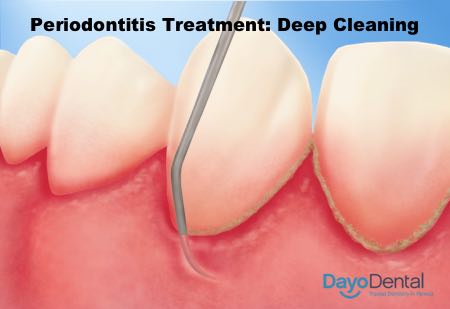
Periodontal Treatment 2: Scaling and root planing, also call deep cleaning –
Gingivitis and mild cases of Periodontal Disease can be treated with scaling and root planing, also called deep cleaning. Hand instruments remove plaque and tartar around and behind the gums. This is done under local anesthesia. Many times this is completed by a dental hygienist under the supervision of a dentist or Periodontist.
Periodontal Treatment 3: Ultrasonic scaling and root planing –
Mild to moderate cases of Periodontal Disease can be treated with ultrasonic scaling and root planing. This is a deep cleaning with an instrument that vibrates at ultrasonic speed to remove plaque and tartar. This is done under local anesthesia.
Periodontal Treatment 4: Laser therapy scaling and root planing (LANAP) –
This is sometimes called the LANAP procedure. Moderate cases of Periodontitis can be treated with laser scaling and root planing. This is a deep cleaning with hand instruments and lasers removing plaque and tartar. This is done under local anesthesia.
Periodontal Treatment 5: Locally delivered antibiotics –
Sometimes the Periodontist or General dentist will order a locally delivered antibiotic to be placed right next to the tooth or specific teeth to enhance their prognosis.
Periodontal Treatment 6: Osseous Surgery –
In more severe cases, a Periodontist will surgically access the tooth roots using Osseous Surgery. The gum is flapped open to clean any bacteria, plaque or tartar inside. This allows the bone to heal in a smooth and organized fashion next to the tooth. This is done in addition to other (above) mentioned therapies. This surgery is done either with local anesthesia or under IV sedation. Osseous surgery is often called Open Flap Surgery or Open Curettage Surgery.
This is also where the perio treatment starts to get really expensive. The average cost of Osseous Surgery is $2500 per quadrant with a Periodontist in the US. But later, we will show you that you can save almost 1000% ($250 per quadrant) on Osseous Surgery in the Dayo Dental Network.
Periodontal Treatment 7: Abscess Removal Surgery –
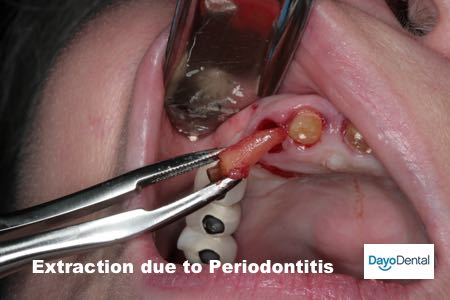
Sometimes an abscess – due to a faulty filling, crown, bad root canal, or plaque being deposited deep next to a tooth – will need to be removed. This needs to be treated by a Periodontist. It needs to be approached on a case by case basis. The average cost of abscess removal surgery with a US periodontist is $1200.
Periodontal Treatment 8: Extraction –
If your Periodontal Disease is too far gone, then extraction is the only option that remains. You may be eligible for a dental implant if there is enough bone that remains. But, dental implant survival after loss of a tooth due to periodontal disease is grim. There would hardly be any bone left. You will need an extraordinary dentist to pull this off.
38. Is scaling and root planing the same as deep cleaning?
What most people know as deep cleaning is also technically known as scaling and root planing. There are other procedures that are deep cleaning procedures, which include LANAP, and ultrasonic cleaning.
In Mexico, scaling and root planing is simply called deep cleaning.
39. How is scaling and root planing, or deep cleaning, performed?
Scaling and root planing, or deep cleaning, is performed under local anesthesia (being numbed). It is a cleaning of the roots of the teeth by hand instruments. The goal of the procedure is to get the roots of the teeth as free of plaque and tartar as possible.
The procedure can be performed by a dental hygienist, a general dentist, or a Periodontist in the US. They are usually done only by a Periodontist in Mexico.
40. What is a Periodontist?
A Periodontist is a gum and jaw bone specialist, who is also specialized in dental implant therapy.
All USA dentists go to undergraduate education for four (4) years before dental school, then dental school for (4) years. After dental school, Periodontists then specialize for an additional three (3) years of a hospital-based residency. A Periodontist is additionally trained in diseases of the gums and jaw bone, dental implants, microbiology of the oral cavity, dental anesthesia, geriatric dentistry and other topics.
41. Can I go to a general dentist to handle Periodontal Disease treatment?
Yes, your general dentist can handle your Periodontal Disease treatment, if they feel comfortable doing so, and they have been trained accordingly. Don’t ever hesitate to ask about your dentist’s credentials. If you don’t feel comfortable with their credential’s ask for a referral.
42. What are the top questions I should ask my periodontist during the initial consultation?
- What is my stage of periodontal disease?
- What are my treatment options? (ask for multiple options)
- Am I a good candidate for this procedure?
- How long have you been doing this? What are your certifications? Do you give lectures on this topic?
- What is the cost of the procedure from start to finish?
- Will my insurance cover this procedure?
- What payment plans do you offer?
- Surgeries: Where will this surgery take place? How long does the surgery take? How long will my recovery take? How do I take care of myself after the surgery?
- What type of anesthesia is used?
- Full mouth periodontal treatments: Are you going to do the entire mouth in one day, or separate the upper and lower in two days?
43. Can a hygienist maintain my Periodontitis treatment?
Under the supervision of a Periodontist, yes a hygienist can maintain your Periodontitis treatment. Once your initial treatment is completed, and you are in a MAINTENANCE phase, you do not need to be seen by a Periodontist at every visit for maintenance.
44. Is Periodontal Disease Treatment painful?
Periodontal Disease can be moderately uncomfortable to treat, but not painful. Most patients deal with the discomfort with 800mg Ibuprofen. Some patients may need something slightly more but this is not frequent.
Recovery times for both deep cleaning and osseous surgery will vary from patient to patient, as patients have different pain tolerances. Some patients will have almost no pain, while others will have moderate pain for up to ten (10) days.
45. Once I get treated for my Periodontal Disease am I done for life?
Some people think this, but this is exactly the opposite of what they need to think. Once you are a Periodontal patient, you are always a Periodontal patient. In fact, you will need to have more often cleanings than most other patients.
Your cleaning schedules will go to once every three (3) months at first, then you may go to once every four (4) months eventually.
46. Will my bad breath go away once I have my periodontal treatment under control?
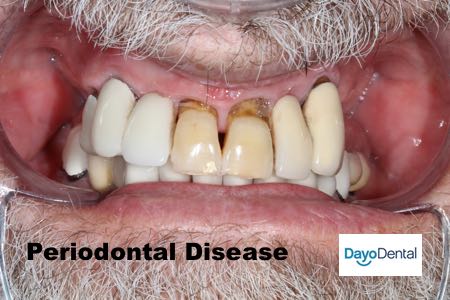
This is probably the greatest benefit to getting your bugs back under control, no more bad breath!
Once you have your bacteria under control, and in appropriate numbers, you should have no more bad breath. But there is one stipulation…you must always keep up with your maintenance appointments.
47. What can I do if my child has Periodontal Disease or Periodontitis?
Your child needs to be seen by a Periodontist. They should be seen by their pediatric dentist first, then referred to a Periodontist if the pediatric dentist feels it is necessary.
Many juvenile forms of the disease will actually resolve on their own, but it needs to be diagnosed appropriately first to make sure.
48. Will Oil Pulling cure Periodontal Disease?
Oil Pulling will not cure perio problems. In fact, there are some studies that show oil pulling can make Severe Periodontal Disease worse.
49. Does a Waterpik help with Periodontal Disease?
You bet. Any interdental aid, such as a Waterpik will help with Periodontal Disease. However, a Waterpik cannot be used in place of flossing. It should be used in conjunction with flossing. Flossing is the gold standard for removing plaque from the teeth and gums.
The best thing you can do is brush first. Then floss. Then top it off with a good spray of Waterpik. You’ll have a beaming smile every time.
50. What diet is good to complement my periodontal treatment?
There has been no set diet certified by the AAP (American Academy of Periodontology) or ADA (American Dental Association) for the Treatment of Periodontal Disease.
But, it is intuitive to keep your body healthy to keep your mouth healthy overall. It is known that it is linked to many systemic diseases. Do whatever you can to prevent systemic diseases to prevent Periodontitis.
51. Are their other natural treatments to prevent the recurrence of Periodontal Disease?
Surprisingly, the closest natural remedy to help with Periodontal Disease is alcohol-free Listerine or some other mouthwash. That’s right, Listerine!
Just make sure that you get an alcohol-free mouthwash because alcohol can cause dryness of the mouth. You can find all kinds of great products in Amazon, including organic brands with great reviews.
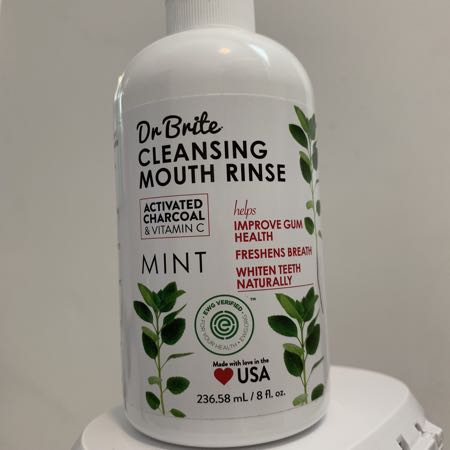
Section 6: Periodontal Disease and Dental Implants
52. Will implants cure Periodontal Disease?
Yes, and no. It is no longer a Periodontal Disease by the fact that the original tooth is gone.
But, if you do not take care of the disease process, and place an implant in a dirty and diseased environment, you can have another condition start which is called Peri-implantitis.
It’s crucial that you see a dentist with an advanced training level in dental implants for your case to ensure that your implant placement is done right. After, you also have to keep up with regular dental visits for control checkup and hygiene.
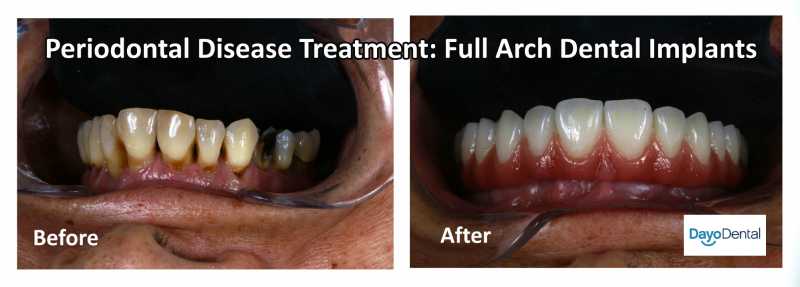
53. My dentist said that all my teeth have to be extracted due to Periodontal Disease. How do I know he is telling the truth?
This is not always about who is “telling the truth”, but rather about one’s treatment preferences. If you do not feel comfortable with that treatment plan, you can always ask for a second or third treatment option.
It’s also best to get a second or third opinion with other dentists in cases when someone just told you all your teeth have to go. That’s a big decision, one that you should not take lightly.
Some people opt to get all their teeth extracted and start over with dental implants when they feel that they have an uphill battle with periodontal disease. Some people are determined to fight on and be meticulous with their regular hygiene visits. The important thing for you to realize is that you always have options, except on severe periodontal issues.
Here at Dayo Dental, we encounter many desperate patients who have been told that all their teeth need to be extracted, coupled with a $50,000 full mouth dental implant quotation. Surprisingly, they learn that their teeth can easily be saved for a fraction of the cost when we sent them to a top dentist in Mexico.
54. At what stage in the Periodontitis does my Periodontist recommend dental implants?
A well-trained Periodontist will keep dental implants in mind at all stages of the Periodontal Disease, except in mild cases of gum disease. A well-trained Periodontist does not want to wait until bone is destroyed before thinking of placing dental implants.
Ultimately, this would be your choice. It’s all the more reason to educate yourself to make an informed decision about what’s best for your dental care.
55. Am I more at risk at losing my implants in the future if I have a history of Periodontitis?
Yes, a person with a history of Periodontal Disease will have a greater risk of losing an implant in the future.
Unless the disease process is halted, the bacteria that cause bone destruction will still be in a more active role in the mouth. These bacteria are known to cause inflammation and bony destruction through causing increased neutrophil and osteoclast activity. This osteoclast activity ends up breaking down the bone. With no bone, the implants have no place to live.
As with regular teeth, you just have to be meticulous in doing things that prevent Periodontitis. Then your dental implants will do just fine.
56. What types of implant restorations are available to replace my whole mouth?
There are basically two types of full arch implant restorations, fixed and removable. Fixed restoration is where the replacement teeth are permanently screwed directly to the implants. Examples of these treatments are All on 4 Dental Implants and Fixed Hybrid Bridge.
Removable snaps into place, but you can remove them yourself to clean them. They are also called Overdentures or Implant Dentures.
Visit this article to learn more about full mouth implant treatment options.
Section 7: Prevention
57. What are the top 10 ways to prevent getting periodontal disease?
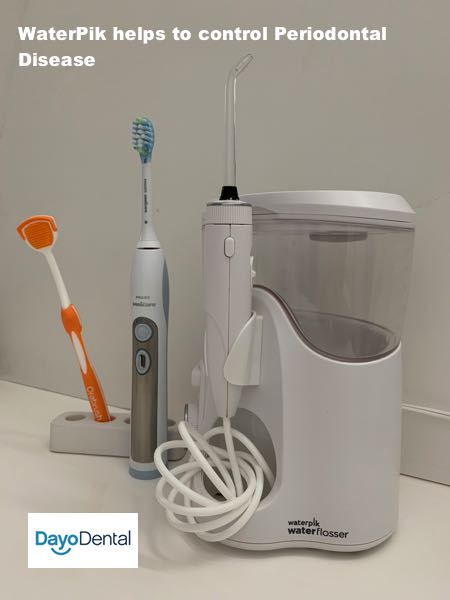
Here are the top 10 ways to prevent periodontitis:
- Check if you have a family history of Periodontal Disease
- Floss at least once a day.
- Use a WaterPik to complement flossing
- Check your meds. Ask your doctor if any meds are predisposing you to Periodontal Disease.
- Brush your teeth at least twice a day
- Visit your dentist regularly for cleanings at least twice a year
- Use a mouth rinse, such as Listerine, at least once a day
- Keep systemic diseases in control
- Keep a healthy diet
- Stay away from tobacco products
58. How can I talk to someone close to me who I suspect has Periodontal Disease?
First things first, don’t say “hey man, your breath smells like skunk!”
The best way to go about this would be to ask them if they have a dentist. Then tell them about your great experience with your dentist. Refer them to someone that you know. Let your dentist do the rest. That is their job.
59. We have a history of Periodontal Disease, what can I do to protect my kids?
Educate your kids about Periodontal Disease. Develop good oral hygiene habits. Visit the pediatric dentist regularly. Watch for signs of bleeding or bad breath. If you set good habits, good results will follow.
60. Should I avoid eating too much sweets to prevent getting Periodontal Disease?
Let me let you in on a little secret. Did you know that dentists are some of the most notorious offenders when it comes to eating sweets? That’s right. Many have chocolates and treats all over their dental office. And those dentists eat them all day!
What gives? All dentists have impeccable oral hygiene.
Sweets will not cause Periodontal Disease. Poor oral hygiene is the one that can lead to Periodontitis.
However, sweets can cause tooth decay, which can cause a tooth to fall out.
Sweets can cause diabetes. Diabetes can be contributory to Periodontal Disease. Not eating sweets does fall into line with keeping a healthy diet, thus decreasing your predisposition to Periodontal Disease.
Section 8: Cost of Periodontal Treatment?
61. Are Periodontists expensive?
This is a relative question. Periodontal treatment can be expensive, but so can tooth replacement. What are your teeth worth to you? Extractions and implants are expensive, as well.
| US Cost | Mexico Cost | |
| Regular Cleaning (per mouth) |
$110 | $30 |
| Scaling and root planing (per quadrant) |
$300 | $150 |
| Ultrasonic scaling and root planing (per quadrant) |
$300 | $150 |
| Laser therapy scaling and root planing (per quadrant) |
$1000 | $150 |
| Locally delivered antibiotics (per site) |
$50 | Free with deep cleanings |
| Osseous Surgery (per quadrant) |
$2500 | $250 |
| Abscess Removal Surgery (per site) |
$1200 | $200 |
| Extraction (per tooth) |
$200 | $70 |
62. What is the cost of full mouth deep cleaning?
The mouth is divided into 4 quadrants. The cost of full mouth deep cleaning is the cost per quadrant multiplied by 4. See the actual treatment plan below the shows the cost of full mouth deep cleaning with a US dentist.
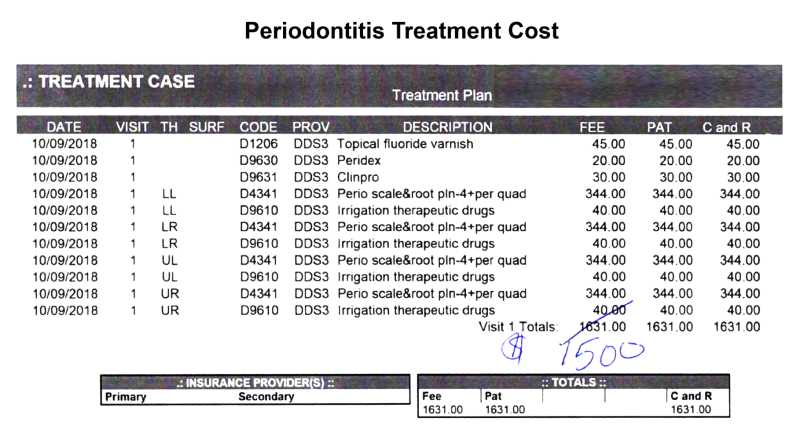
63. Why is average cost of periodontal treatment a lot less in Mexico than in the US?
The periodontal treatment technique is the same, whether you go to a dentist in the USA or Mexico. Mexico Periodontists make an average of $40,000 a year. US periodontists make an average of $250,000 per year.
Also, there are a lot less Periodontists in the US to meet their local demand, which is why they command high prices. There are just not enough US dental students that go into the Periodontics specialty.
64. What are other costs associated with Periodontal Treatment?
The average cost of IV sedation is $500. The average cost of Periodontal Maintenance is $110 per session.
What is the cost of a dental implant? The average cost of a dental implant with a crown is $3,700 in the US. The average cost in Mexico is $1,600. Check out this blog for full mouth implant costs.
65. Does insurance cover periodontal diseases?
Some insurances do cover periodontal therapies. Not all periodontal therapies will be covered by all insurance companies. Sometimes, there will be a waiting period before your insurance company will cover your treatment. Unfortunately, you cannot make a blanket statement about dental insurance companies and their coverage.
Your best bet is to get a prior authorization for treatment from your insurance company to determine what will be covered.
66. What are my options to get affordable periodontal treatment?
For less complex periodontal therapy, such as deep cleaning, your general dentist may be able to complete this treatment. It would most likely be cheaper with a general dentist than with a specialist.
Just make sure you check the general dentist’s credentials. Make sure you get multiple treatment plan options. Many different providers may have different treatment plans with different fees associated with them.
You could try a dental school. Although the treatment may take a little bit longer, the fees are significantly less, and you are doing the world of academic dentistry a tremendous solid by being a student’s patient.
There are credit financing options available through certain companies offered by some dental offices that offer 0% interest for extended periods of time.
Going to Mexico is a great option. Mexico is a safe place to get treatment. Just make sure that you check the credentials of the provider that is treating you. Mexico is the top dental tourism destination for Americans and Canadians.
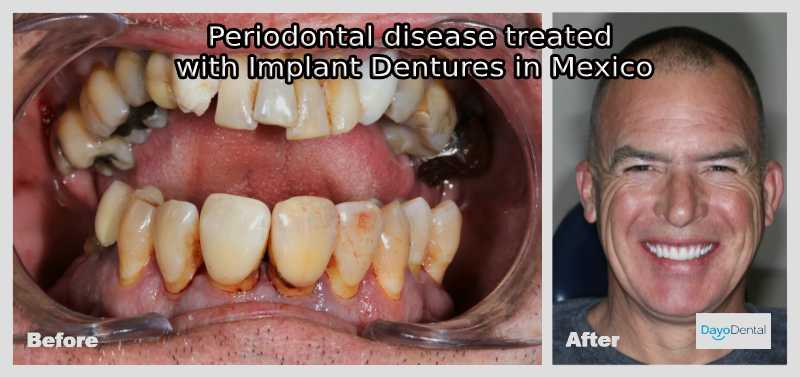
67. Should I go to Mexico to get affordable periodontal disease treatment?
Going to Mexico could be a viable and affordable treatment option for people with periodontal disease. Just look for a qualified Periodontist in Mexico if you do so. Many people also travel to Mexico for affordable dental implants if you are already at that stage of the gum (bone) disease.
Normally, Periodontist can start your periodontitis treatment right after the consultation if you agree with the recommendations. If not, you can stay in Mexico for the next availability, which can be as early as the next morning. Full mouth deep cleanings are done in one day. Full mouth Osseous Surgery can be done in one or two separate days.
Dayo Dental works with the top 5% dentists in Mexico. You get the same quality treatment with experienced dentists at a fraction of the cost. As an example, you can save almost 90% (Osseous Surgery) on the cost of common Periodontal Disease treatments in Mexico.
Explore our services at www.dayodental.com or call us at 877-987-3296.
Periodontitis is a common disease. You are not alone. You have many options to treat your periodontal disease. You just have to take action now to prevent the disease from getting worse.




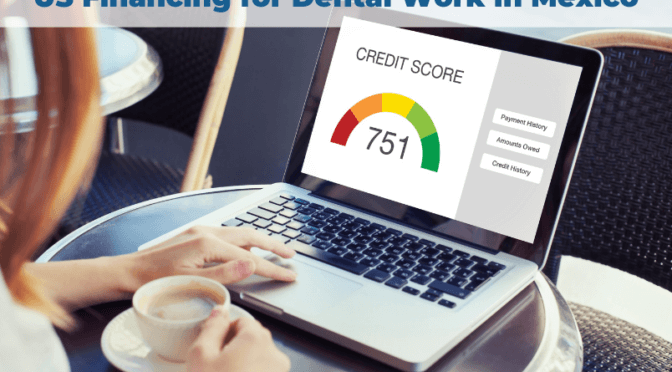 Can I Use US Financing for Dental Implants in Mexico? Everything You Need to Know
Can I Use US Financing for Dental Implants in Mexico? Everything You Need to Know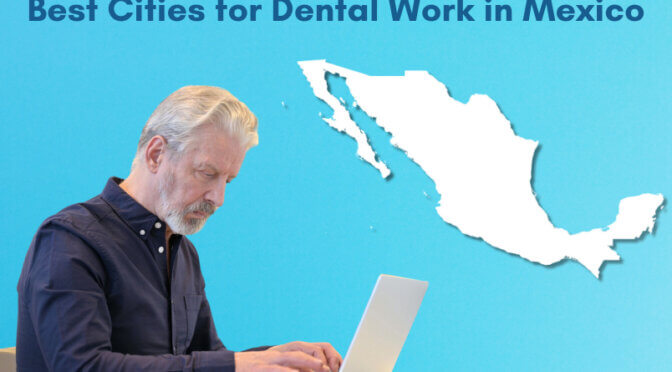 Dental Tourism Destinations: Best Cities for Dental Work in Mexico
Dental Tourism Destinations: Best Cities for Dental Work in Mexico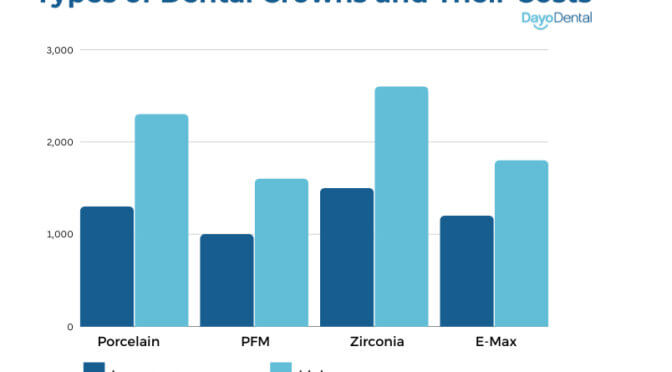 Which Crown Reigns Supreme? Comparing Different Types of Dental Crowns and Their Costs
Which Crown Reigns Supreme? Comparing Different Types of Dental Crowns and Their Costs